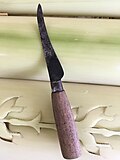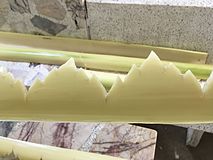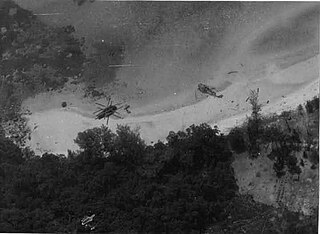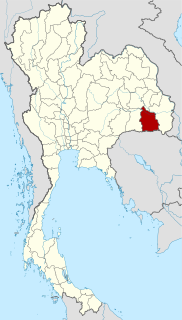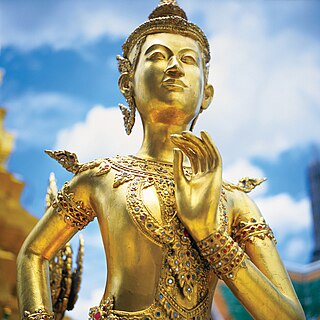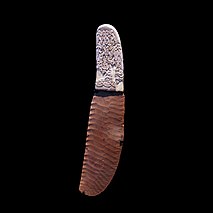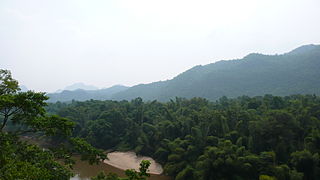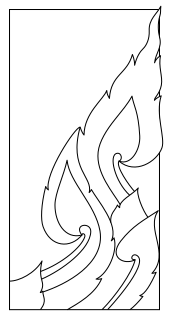
Thai banana stalk carving or thaeng yuak (แทงหยวก, from Tang meaning "stab or carving", and Yuak mean "Banana stalk") is the Thai local art of carving the banana stalk for temporary decoration in funerals and cultural events such as religious ceremonies and ordination ceremonies. It is categorized as the fresh material carving section in the main 10 Thai art skills (ช่างสิบหมู่) [1] although the population of thaeng yuak artists is very low compared to other art skills sections.

Thai funerals usually follow Buddhist funerary rites, with variations in practice depending on the culture of the region. People of certain religious and ethnic groups also have their own specific practices. Thai Buddhist funerals generally consist of a bathing ceremony shortly after death, daily chanting by Buddhist monks, and a cremation ceremony. Cremation is practised by most peoples throughout the country, with the major exceptions being ethnic Chinese, Muslims and Christians.
Ordination is the process by which individuals are consecrated, that is, set apart as clergy to perform various religious rites and ceremonies. The process and ceremonies of ordination vary by religion and denomination. One who is in preparation for, or who is undergoing the process of ordination is sometimes called an ordinand. The liturgy used at an ordination is sometimes referred to as an ordination.
Contents
Thaeng yuak is a carving art that was popular in the lower part of central Thailand such as Phetchaburi and Ayutthaya province but most information about thaeng yuak art has been saved in Phetchaburi community more than it has been in other provinces. [2] The main purpose of Banana Stalk Carving is to decorate the bier and funeral area. [3] Also, thaeng yuak is made by the very skillful artists and the people who want to respect the dead. In the other words, it is used for royal funerals, as well as those of well-known monks, remarkable people and important people. However, the popularity of thaeng yuak has reduced since the new culture has become more interesting to the youth.

Thailand, officially the Kingdom of Thailand and formerly known as Siam, is a country at the center of the Southeast Asian Indochinese peninsula composed of 76 provinces. At 513,120 km2 (198,120 sq mi) and over 68 million people, Thailand is the world's 50th largest country by total area and the 21st-most-populous country. The capital and largest city is Bangkok, a special administrative area. Thailand is bordered to the north by Myanmar and Laos, to the east by Laos and Cambodia, to the south by the Gulf of Thailand and Malaysia, and to the west by the Andaman Sea and the southern extremity of Myanmar. Its maritime boundaries include Vietnam in the Gulf of Thailand to the southeast, and Indonesia and India on the Andaman Sea to the southwest. Although nominally a constitutional monarchy and parliamentary democracy, the most recent coup in 2014 established a de facto military dictatorship.

Phetchaburi or Phet Buri is a town in southern Thailand, capital of Phetchaburi Province. In Thai, Phetchaburi means "city of diamonds". It is approximately 160 km south of Bangkok, at the northern end of the Thai peninsula. As of 2005, the town had a population of 26,181 and covers the two tambon Tha Rap and Khlong Krachaeng.

Thai royal funerals are elaborate events, organised as royal ceremonies akin to state funerals. They are held for deceased members of the Royal Family, and consist of numerous rituals which typically span several months to over a year. Featuring a mixture of Buddhist and animist beliefs, as well as Hindu symbolism, these rituals include the initial rites that take place after death, a lengthy period of lying-in-state, during which Buddhist ceremonies take place, and a final cremation ceremony. For the highest-ranking royalty, the cremation ceremonies are grand public spectacles, featuring the pageantry of large funeral processions and ornate purpose-built funeral pyres or temporary crematoria known as merumat or men. The practices date to at least the 17th century, during the time of the Ayutthaya Kingdom. Today, the cremation ceremonies are held in the royal field of Sanam Luang in the historic centre of Bangkok.





